Playing fetch isn’t just for dogs! Believe it or not, your feline friend can also enjoy this lively game, bringing you both hours of entertainment and a unique way to strengthen your bond.
If you’ve ever watched your cat chase after a toy mouse or a crumpled piece of paper, you’ve seen the predatory instincts that make fetch a fitting activity for them.
so there’s no harm if we teach them how to teach a cat to fetch more attention.
Unlike the common belief that cats are too independent for such games, with patience and the right approach, you can tap into their natural behaviors and turn fetch into a fun and stimulating exercise. (1)
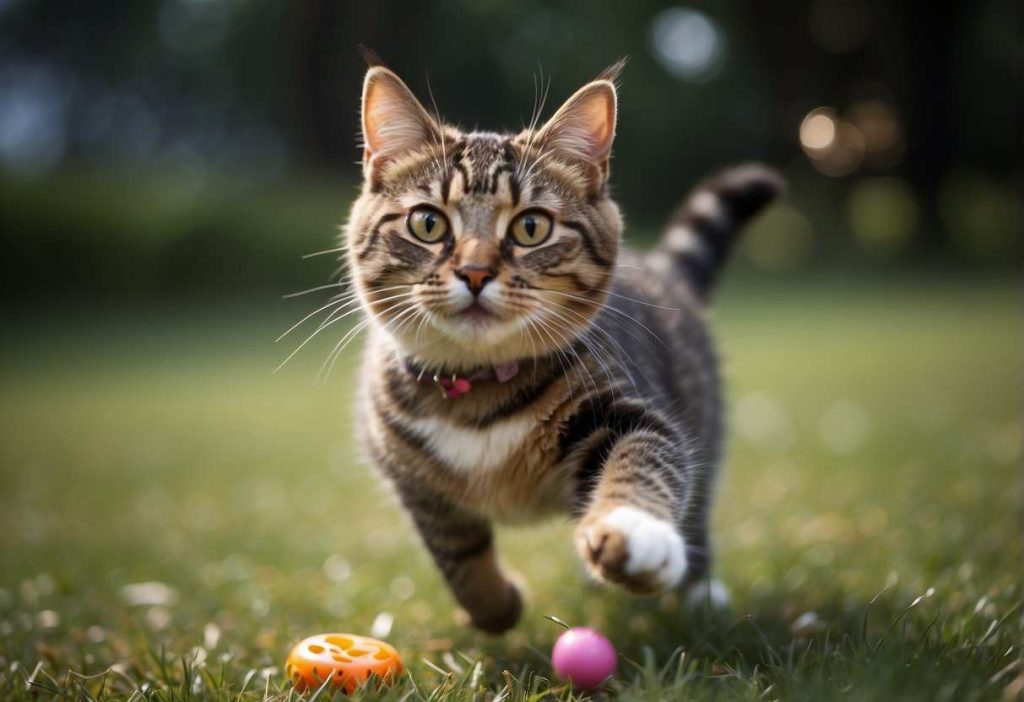
Teaching a cat to fetch combines understanding their behavior with structured yet enjoyable training techniques. The key is to make the experience positive and rewarding for your cat. (2)
Using their favorite toys and lots of treats, you can gradually introduce the idea of fetching in a way that feels like play rather than work.
This game not only provides mental and physical stimulation for your cat but also enhances your relationship with your pet, as you work together and share in the fun.
Key Takeaways
- Interactive play such as fetch can be a joyful activity for you and your cat.
- Fetch training aligns with a cat’s instincts and can be achieved through positive reinforcement.
- Consistency and patience are essential for successful fetch training with your feline companion.
How to Teach a Cat to Fetch?
Basic Training Steps
Getting Your Cat’s Attention
First, let’s grab your cat’s attention! Find a toy that your kitty can’t resist, and let’s get started. Shake it, rattle it, roll it across the floor; do whatever it takes to pique their curiosity.
It’s like becoming the Pied Piper of Cats, where the sound of the toy is your flute.
Encouraging the Chase and Retrieve
Now, for the fun part: throw the toy and cheer them on as they go for the chase. When they’ve pounced on their ‘prey,’ coax them back to you by calling their name or offering a treat.
Reward your cat with a tasty treat and some affection when they bring the toy back.
Treats are like high-fives for cats—they say, “You nailed it!”
- Use positive reinforcement techniques:
- Cheerful verbal praise
- Delectable treats
- Affectionate petting
Reinforcement and Repetition
Remember, you’re the coach in this feline version of fetch. Maintaining a regular training schedule is like watering a plant; consistency helps it grow.
Short, daily sessions are key—think of it as your cat’s daily workout. (3)
- Stay consistent in your training sessions.
- Keep sessions short and engaging.
- Repeat the process until it becomes second nature.
By breaking down the task with patience and consistency, you transform “Mission Impossible” into “Mission Accomplished.”
Trust the process, and before you know it, your cat will be fetching like a pro, surprising everyone who says, “I thought only dogs did that!”.
Understanding Cat Behavior and Instincts
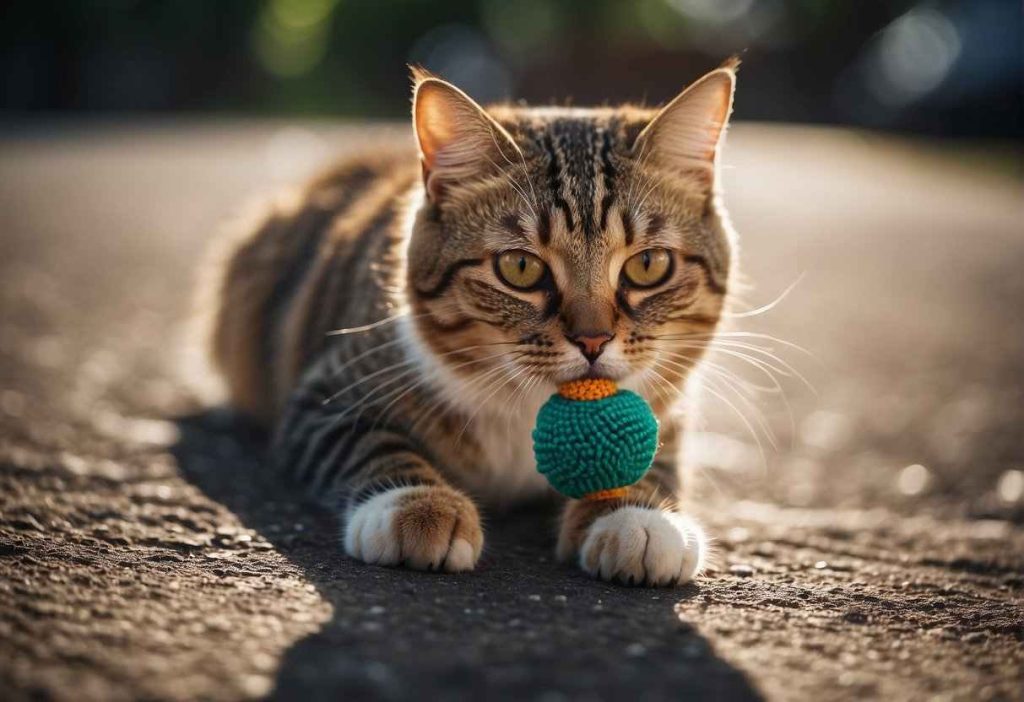
Cats, by nature, are hardwired to hunt. This instinct makes teaching your fur baby to fetch not just a fantasy! Fetching mimics their innate habit of chasing and retrieving prey, making the most of their predatory skills.
Now, let’s chat about temperament types:
- Confident Cats: These felines love to explore and aren’t shy in showing off their hunting prowess. They might take to fetch like a fish to water!
- Shy Kitties: A bit more hesitant, these cuties might need extra coaxing with gentle encouragement and tempting toys.
- Independent Thinkers: Preferring to do things on their terms, these cats might engage in fetch on a whim.
You may be thinking, “Can my cat’s temperament shape their playstyle?”
Absolutely! A confident cat might leap at the chance to fetch, while the independent thinker could prefer solo playtimes.
Understanding this can help you tailor your fetch training to fit your cat’s unique personality.
Remember, it’s all about patience and positive reinforcement.
Encourage them with treats and their favorite toys, and never force it.
With the right approach, you’ll have your cat fetching in no time—how’s that for a purr-fectly good time?
A quick tip: For the best results, limit training sessions to about 5-10 minutes to keep their interest peaked—nobody wants an overworked kitty!
Preparing for Success in Fetch Training
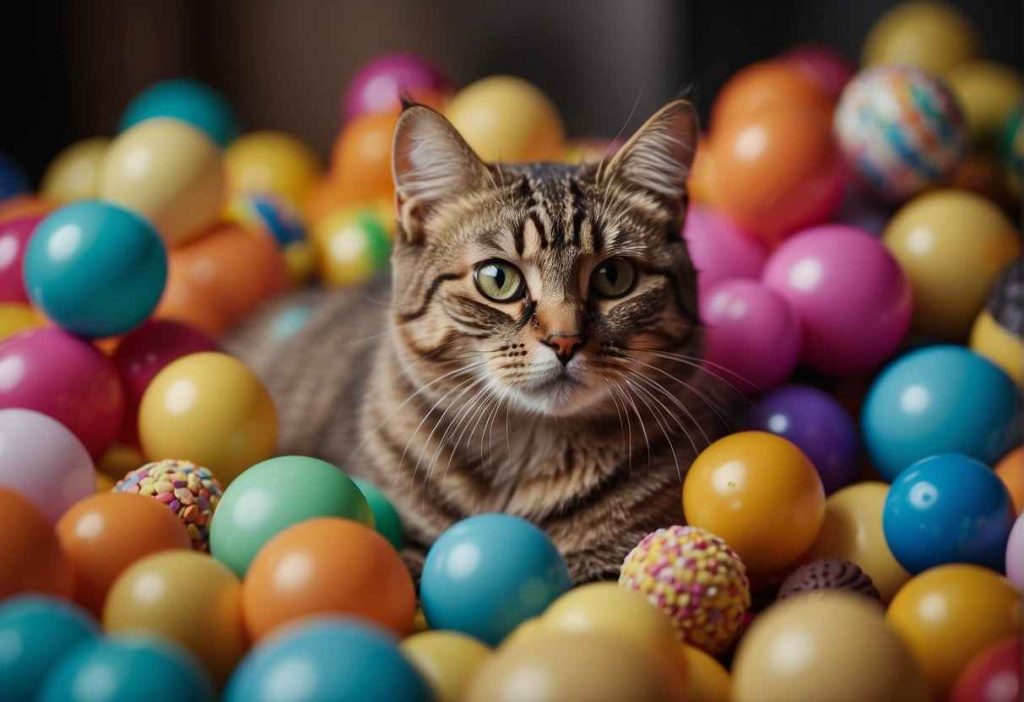
Let’s set you up for a paws-itively successful training session.
Essential Considerations Before Starting Training
Choosing the Right Environment
- Quiet please: Find a space that’s free from noise and distractions. This is crucial for maintaining your cat’s focus.
- Controlled space: Ensure the room is safe and enclosed; living rooms usually work great. No need for your feline friend to dash under the bed with their new plaything!
Selecting the Appropriate Toys
- Size matters: Pick toys that are small enough for your cat to carry in their mouth, but large enough so they’re not a choking hazard.
- Keep it interesting: Use toys that pique your cat’s interest. Some cats go wild for crinkly balls, while others might prefer soft plushies.
| Toy Type | Why It Works |
| Crinkly balls | Stimulate with sound |
| Plush mice | Imitate prey |
| Light rubber balls | Easy to carry |
Remember, your cat’s preference is key when selecting a toy. It’s like choosing between chocolate and vanilla—your cat will have a favorite!
Step-by-Step Guide to Teaching Your Cat to Fetch
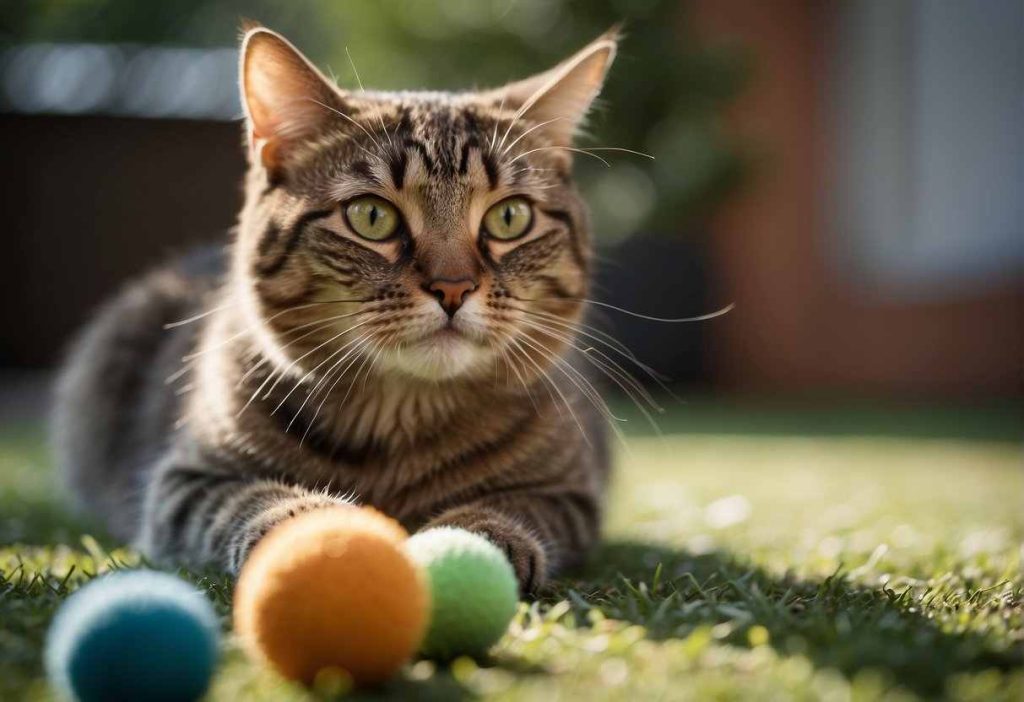
Getting Your Cat’s Attention
First things first, you’ve got to get your cat’s attention. Choose a toy that your little buddy goes crazy for. A small ball or a soft toy that your cat can easily carry should do the trick.
Give it a little wiggle or a toss to see if those feline eyes light up with intrigue. (4)
Techniques to Make the Toy Interesting
Now let’s make it irresistible!
Cats love things that move unpredictably, so flick the toy around like it’s trying to escape. Your aim? To initiate a game of chase that Mr. Whiskers can’t resist. Maybe add a little sound or some catnip to up the ante.
- Initiating the ChaseSit close to your cat.
- Gently throw the toy a short distance.
- Encourage your cat to go after it with a playful “Go get it!”.
The Retrieval Process
So, your cat’s pounced on the toy—great job! Now, here comes the trick: getting them to bring it back. Hold a treat in your hand and call your cat back to you.
If your cat moves toward you with the toy, even just a few steps, it’s praise time! Give them that treat and some loving scratches to make fetching a positive experience.
Rewarding and Reinforcement
Here’s where the magic happens. Repeat, reward, and reinforce. Each time your cat brings the toy back (or even tries), break out the treats. (5)
A tasty morsel, a click from a clicker, or even an enthusiastic “Good kitty!” reinforces the behavior. Remember, patience is your best pal here.
Your cat may not fetch like a dog on the first try, or the fiftieth, but keep it fun and relaxed.
What do they say about cats and curiosity? Well, in this case, let’s hope your cat’s curiosity leads them straight into a game of fetch!
Enhancing the Fetch Experience
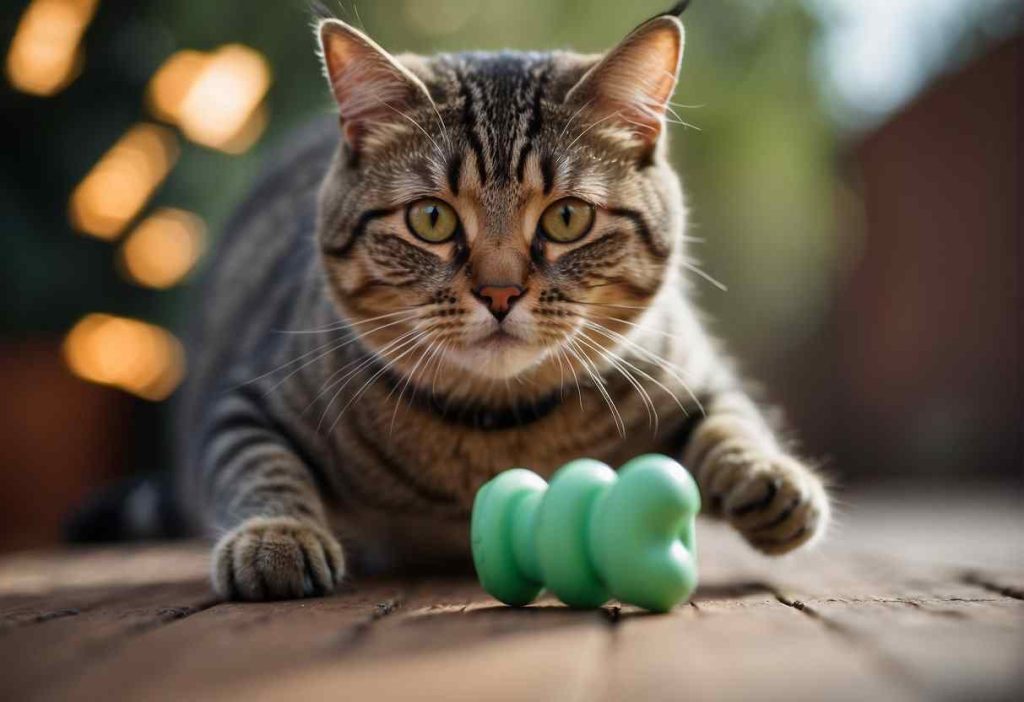
To keep that sparkle in their gameplay, let’s spice up the fetch with a dash of creativity.
Incorporating Various Toys: Why settle for one toy when we can mix it up? Try these for starters:
- Feathery wand
- Light bouncy ball
- Crinkly toy mouse
Switch ’em out regularly to keep your kitty guessing and zap any boredom away!
Increasing the Difficulty Gradually: Imagine the satisfaction of a challenge conquered!
Begin with tossing toys a short distance, then, as your feline friend masters the game, throw further or hide the toy, turning fetch into a mini treasure hunt.
Building a Deeper Bond Through Play: Ever felt that heartwarming moment when your cat brings the toy back to you? That’s the bond we’re aiming for.
Cheer them on with a soft clapping and a warm “Good job!”. They’ll love the attention and the applause.
Understanding the Signs of Enjoyment and Engagement:
- Tail high and flicking
- Attentive and bright eyes
- Leaping and darting with agility
These signs scream, “Let’s keep playing!”
With each game, you’re not just passing time, you’re elevating your cat’s skills and drawing closer together.
Fun fact: Did you know that engaging in play like fetch can increase your cat’s problem-solving skills?
That’s right, your clever companion gets smarter with every toss and retrieve. So, grab that toy and throw it. Let’s make fetch happen!
Troubleshooting Common Fetch Training Challenges
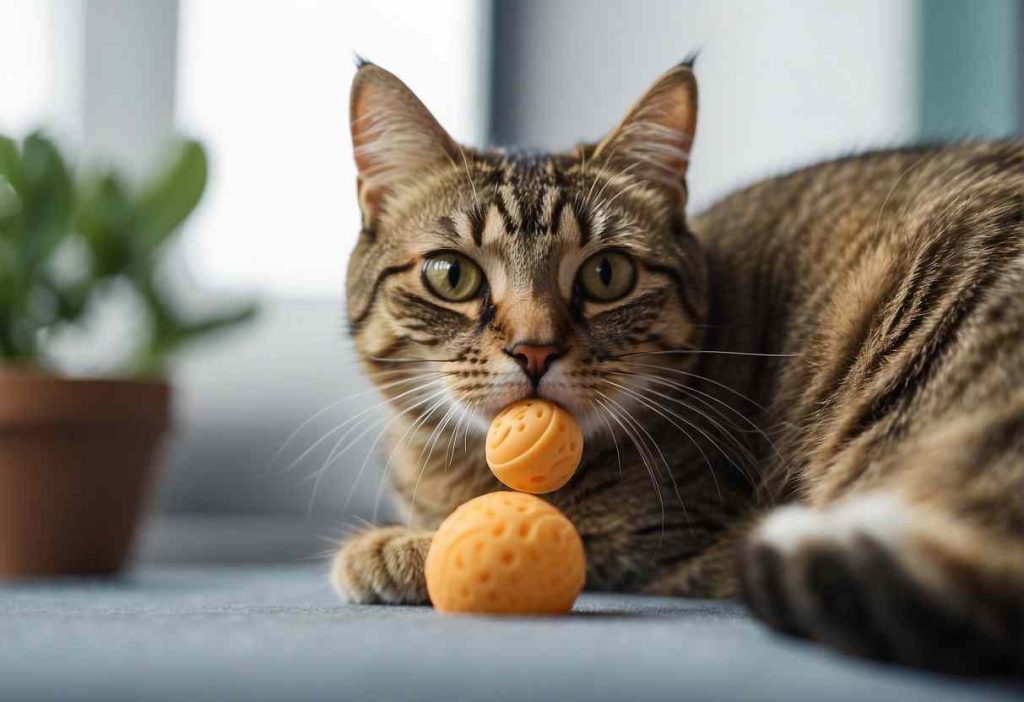
Let’s tackle some common hiccups you might encounter:
Loss of Interest:
- Cats are naturally curious, but they also bore quickly.
- If your kitty drops the ball—literally—try these steps:
- Swap out toys to keep things fresh. Variety is the spice of life, after all!
- Shorten training sessions. Cats prefer playtime in small doses.
- Reward with tasty treats or affection—whichever makes your cat’s purr motor run.
Shy or Reluctant Cats:
- Some feline friends might be a tad timid. To coax them into the game:
- Begin with gentle encouragement. Never force play; it should always be fun.
- Create a safe space. Reduce noise and distractions.
- Use soft toys. Some cats might be intimidated by harder objects.
Improving Performance:
- Want to take your cat’s fetching skills to the next level? Consider these advanced tips:
- Introduce commands like “bring it back” with consistency.
- Gradually increase the throwing distance once the basic fetch is mastered.
- Practice in different environments to boost adaptability.
Remember, patience is key.
Cats are not robots programmed to fetch, but with time and positive reinforcement, you’ll be playing fetch like pros. And won’t that be the day to tell the tails, huh?
Keep at it, and enjoy the journey!
Quick Recap
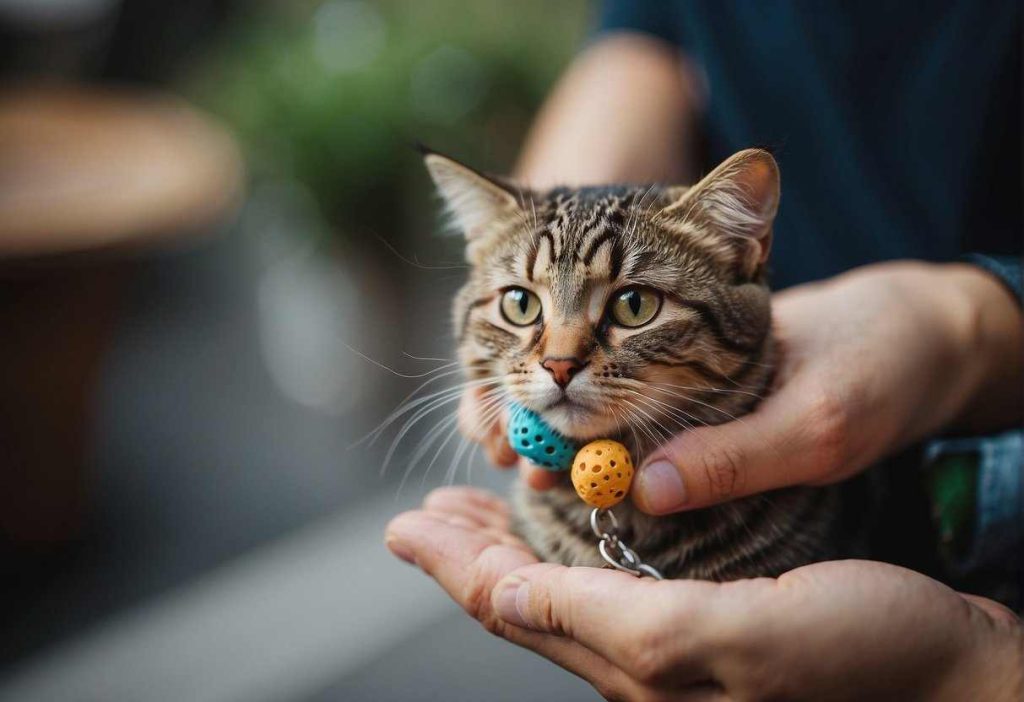
Remember, patience and consistency are your best pals through this journey.
Here’s a quick checklist to make sure you’re on the right track:
- Choose the Right Toy: Start with a lightweight one that your cat shows interest in.
- Keep Training Sessions Short: Cats have short attention spans, so aim for 5-10 minutes.
Training Steps:
- Show the Toy: Ensure it grabs your cat’s attention.
- Toss the Toy: Not too far, though.
- Encourage the Fetch: Point to the toy and say “fetch”.
- Reward Your Cat: Treats, praise, or a cuddle – whatever makes your kitty happy.
Remember:
- Practice daily, but don’t overdo it.
- Celebrate every small success – even if it’s just your cat touching the toy.
Got it? Great!
Now, who’s ready to have some fetching fun with their whiskered companion?
Frequently Asked Questions
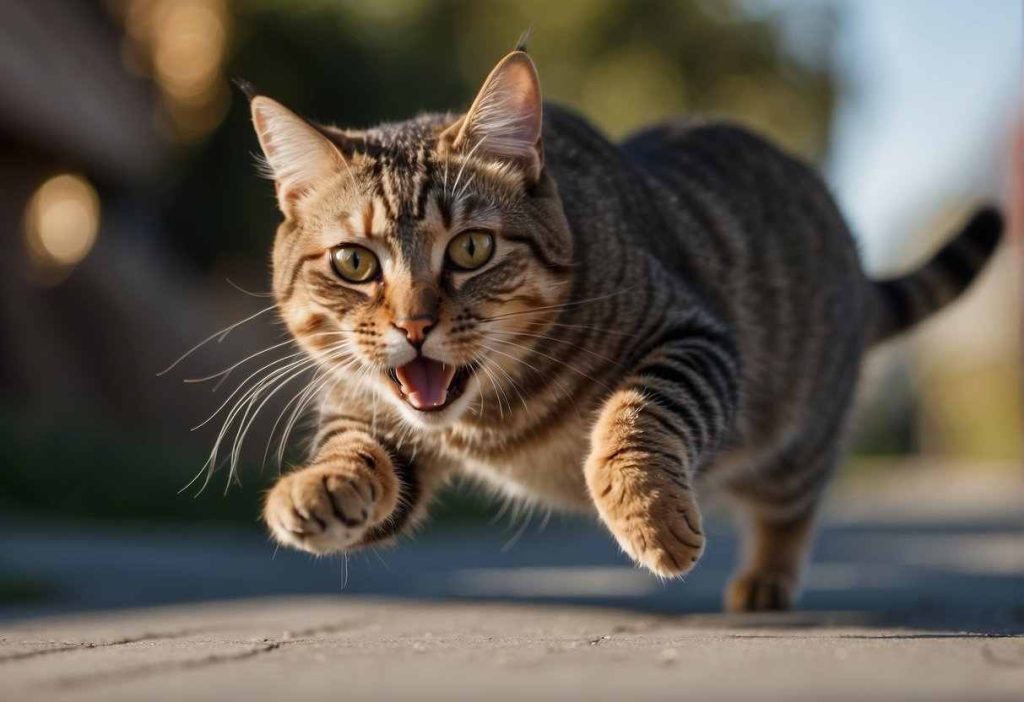
Can any cat learn to fetch, or are some breeds more inclined to do so?
Indeed, many cats can learn to fetch, but some breeds like Siamese or Maine Coons may pick it up more naturally.
Your cat’s personality is also a key factor, with playful and curious cats being more likely to enjoy the game.
How long does it typically take for a cat to learn to fetch?
Your cat’s learning curve can vary. Some might grasp the game within a few days, while others could need a few weeks.
What do I do if my cat chases the toy but doesn’t bring it back?
If your cat chases but doesn’t retrieve, start by rewarding any small action toward the right behavior.
If they touch the toy, offer praise or a treat. It’s about baby steps!
How can I keep my cat interested in fetching over time?
Keep sessions short and sweet to avoid boredom.
Vary the toys used to maintain interest and engage with your cat energetically to keep the mood upbeat
What are the signs that my cat is enjoying fetch?
Watch for a perky tail, alert ears, and an enthusiastic chase. These are telltale signs that your cat is having a ball. Literally!
Should I use treats every time my cat fetches the toy?
Initially, treats can be a great incentive.
Once your cat gets the hang of it, gradually decrease the treats and offer varied forms of affection like cuddles or verbal praise.
What are the benefits of teaching a cat to fetch?
Teaching a cat to fetch can provide mental stimulation, physical exercise, and a bonding opportunity between you and your feline friend.
It taps into their natural hunting instincts and keeps them entertained, promoting a healthier and happier relationship with your pet.


